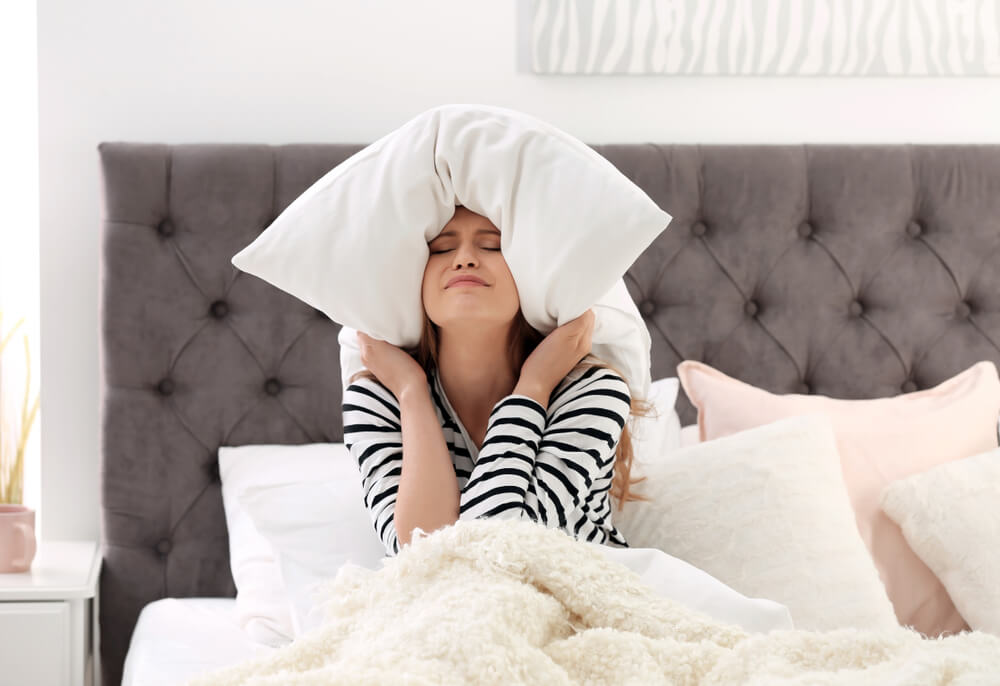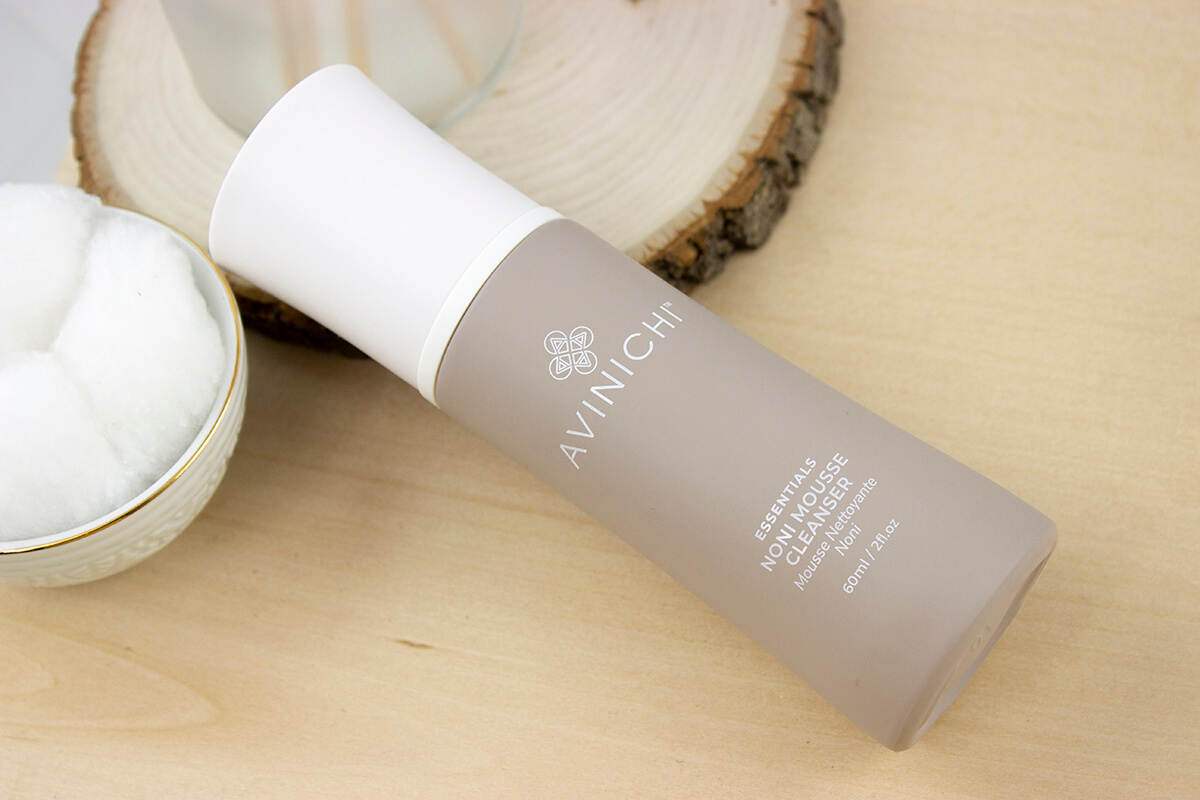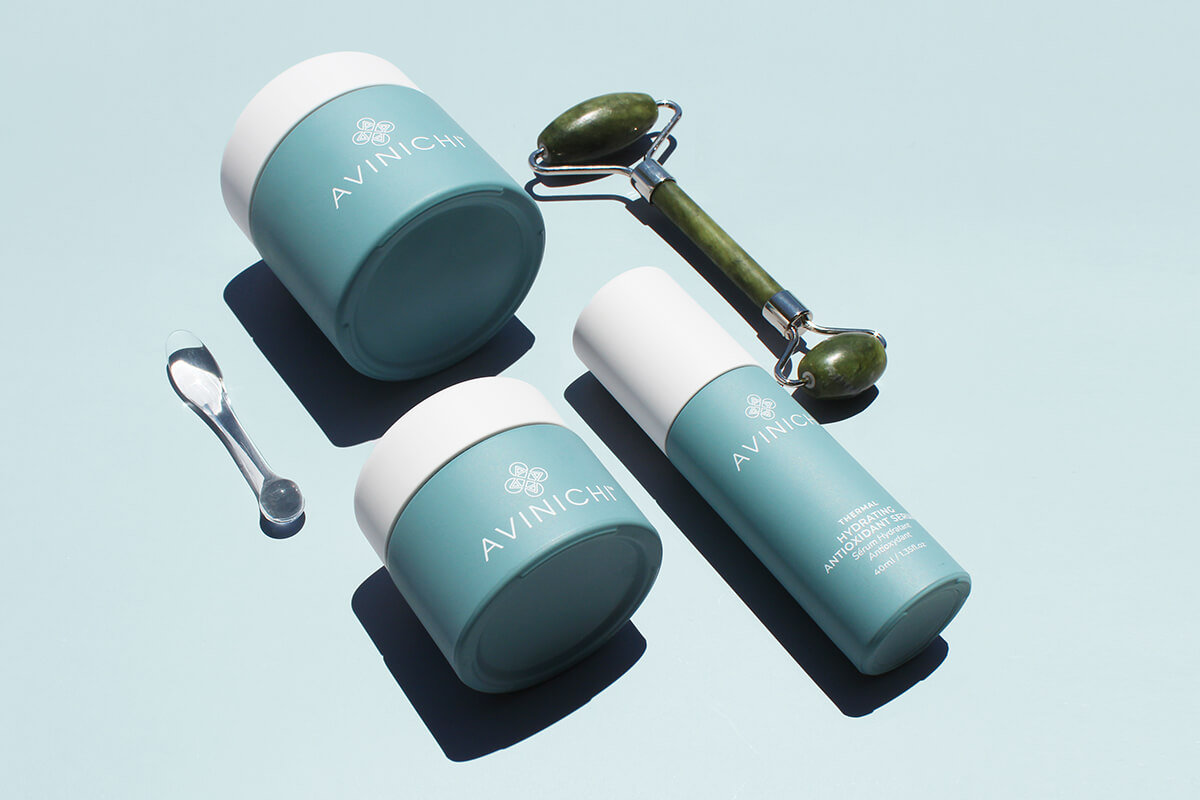Published: September 15, 2024

If you have acne-prone skin, identifying your main acne triggers can be a big game-changer, enabling you to finally put a stop to the root causes of your breakouts. Unfortunately, deciphering what those triggers are isn’t easy, especially since there are usually so many contributing factors at play, some of which aren’t very obvious. Sure, you already know that you should be cleansing twice a day and exfoliating a few times a week, but something as simple as your pillowcase could also be the reason behind your pimples.
How does a pillowcase cause breakouts? Keep reading as Avinichi explains. We’ll also talk you through what you can do about this so that you can start to enjoy a clear and spot-free complexion.
Is Your Pillowcase the Cause of Your Breakouts?
When it comes to the main culprits behind acne breakouts, pillowcases aren’t usually a focus. However, consider the fact that your skin spends several hours each night rubbing against your pillowcase and the link between your bedding and your breakouts becomes more apparent.
Of course, you don’t want to turn your attention to your pillowcase if it isn’t the reason behind your breakouts, so here are a few signs to look out for that indicate that your pillowcase is to blame:
- Your acne breakouts are concentrated on the sides of your face. If you favor one side when sleeping, this is the side where the majority of your breakouts develop
- Your acne clears up for a few days after you’ve just washed your bedding
- You notice a lack of breakouts when you sleep in a different bed, such as at a hotel, for a few nights
- Your skin, as well as your breakouts, tend to look worse in the mornings after you’ve woken up
How Exactly Does a Pillowcase Cause Breakouts?
You should now have a clearer idea as to whether or not your pillowcase is causing your acne, but why exactly is this happening?
Here are a few of the ways in which your pillowcase could be contributing to your breakouts:
Friction
Each time your skin rubs against your pillowcase, friction occurs. This can quickly cause and worsen breakouts. It’s a condition known as acne mechanica, which refers to acne that has been caused by a certain material or item touching your face.
Friction can also lead to inflammation. As you know, inflammation is a precursor to breakouts. The more inflamed your skin is, the worse your acne will be.
Trapped Dirt and Oil
Each time your face and hair touch your pillowcase, some of the dirt, oil, and bacteria that reside on your skin and hair will transfer over onto your pillowcase. The oil from your hands, along with the sweat that you release while you sleep, adds to this. The result is a pillowcase that’s harboring a large quantity of impurities.
The next time your face touches your pillowcase, some of those impurities transfer back onto your skin. It doesn’t take long for this to clog pores and trigger inflammation, meaning that breakouts won’t be too far away!
Irritation
Some fabrics are known for irritating the skin. If you have sensitive skin, then you’ll be more susceptible to this than most. The constant exposure to an irritant while you sleep will quickly cause your skin to react, with inflammation and breakouts being the next stage you’ll experience.
Detergent
Laundry detergents are known for being formulated with a number of allergens and irritants. From fragrances and surfactants to dyes and other chemicals, traces of these compounds remain in your pillowcase long after it has been washed.
Although research suggests that these ingredients shouldn’t cause a problem for most people, those with sensitive, acne-prone skin can be an exception. As soon as your skin reacts negatively to anything, including your laundry detergent, the subsequent inflammation will quickly lead to breakouts.
How Can You Stop Your Pillowcase From Causing Breakouts?
The good news is that there are several steps that you can take to prevent your pillowcase from triggering your breakouts:
Change Your Pillowcase Every Couple of Days at Least
Swapping your dirty pillowcase for a clean one is an obvious solution when it comes to saving your skin from all of the dirt and bacteria that a pillowcase collects. However, how often should you do this?
In the past, experts used to advise that this should be done every week. This was then shortened to every two to three days. Now, many dermatologists recommend that pillowcases should be changed each night. The amount of impurities that we’re exposed to in today’s polluted world is the cause of this changing advice. This may mean that you’ll need to invest in a few extra pillowcases – one for each night – so that you can then wash them all together at the end of the week.
Cleanse Your Face Before Going to Bed

The best way to save your pillowcase from being overloaded with impurities is by cleansing your face before bed. A clean face touching a clean pillowcase will save you so much strife!
With that said, don’t be tempted to use an overly powerful cleanser. The last thing that you want to do is irritate your skin and cause inflammation. Instead, use one that contains gentle surfactants, just like the Avinichi Noni Mousse Cleanser. It’s a water-based cleanser but it also contains a few oils, which will help to effectively remove excess sebum from your skin.
Cleanse Your Face as Soon as You Wake Up
Even if you cleanse before bed and sleep on a clean pillowcase, your skin will still end up releasing sweat and sebum while you snooze. This will inevitably end up moving back and forth between your skin and your pillowcase overnight, making a morning cleanse essential.
If you usually wait a while before cleansing your face in the morning, change your routine so that you’re doing it as soon as you wake up. This way, any impurities from your pillowcase won’t have quite so much time to settle into your pores. This should save you from dealing with quite so many breakouts!
Keep Your Evening Skincare Routine Light

After cleansing in the evening, it’s important that you don’t leave your skin bare. You need to follow up with a skincare routine. However, you don’t want to be using any heavy, oily products, particularly if you have acne-prone skin. Not only could these clog your pores while you sleep but it also means that there’ll be more residue to rub off onto your pillowcase.
Ideally, keep your evening skincare routine light. Look for products that hydrate without weighing the skin down, such as the Mulberr-E Moisture Infusion Cream from the Avinichi Phyto Thermal Collection. This oil-free moisturizer is packed with hydrating ingredients and antioxidants. You’ll wake up to skin that looks fresh and revitalized!
Upgrade to a Silk Pillowcase
Of course, even if you do all of the above, that’s not going to help much with the friction that’s caused when your skin rubs against your pillowcase. The only way to put a stop to this is by using a pillowcase that’s made from a smoother material, such as silk.
Compared to cotton, your skin will glide over a silk pillowcase so much more easily. Silk won’t cause the same amount of friction, aggravation, or inflammation. It’s also less absorbent than, say, cotton. This means that it won’t soak up quite as much sebum and dirt, making it easier to keep your sleeping environment clean.
Keep Your Hair Clean
It’s not just your skin that passes impurities over to your pillowcase. Your hair is responsible for this too. In fact, your hair could be more to blame than you’d imagine. Hair care products are known for containing heavy, pore-clogging ingredients that quickly trigger breakouts. The last thing you want is for that product residue to end up on your face, yet this is exactly what happens if it rubs onto your pillowcase.
To counter this, start by using non-comedogenic hair care products. Keep your hair as clean and oil-free as possible. If you’ve used any leave-in hair care or styling products, consider braiding your hair before bed to save quite as much of it from splaying over your pillow. Wrapping your hair in a silk scarf to keep it away from both your pillow and your face can also help.
Use a Laundry Detergent Designed for Sensitive, Acne-Prone Skin
Earlier, we mentioned how many laundry detergents contain allergens and irritants. Fortunately, they’re not all like that!
There are now plenty of laundry detergents out there designed specifically for sensitive, acne-prone skin. These are the products that you need to be using. They’ll contain minimal irritants, saving your skin from the inflammation that the more toxic laundry compounds cause.
Skip the Fabric Softener
Speaking of toxic laundry compounds…
It doesn’t get much worse than fabric softener/conditioner. Sure, these products make your laundry feel ultra soft, but they’re also notorious for the amount of residue that they leave behind. They’re also usually filled with pore-clogging oils.
Try skipping the fabric softener for a while whenever you do your laundry to see if this helps your breakouts.
Try Changing Your Sleeping Position
In addition to doing all of the above, it can also help to change your sleeping position. If you sleep on your side, then your skin will be coming into contact with your pillowcase for an extended period. However, roll over onto your back and your skin and pillowcase will have minimal contact.
The advantage to this sleeping position is that it will also help you to prevent the appearance of wrinkles. Not only will you wake up to a clearer complexion, but your skin will look much smoother and firmer too!
Summary
Acne breakouts can be extremely frustrating to deal with, especially if you can’t figure out their cause. Hopefully, this article has somewhat helped with that. Put some effort into ensuring that your pillowcase isn’t causing any problems for your skin and you could soon see a big improvement in the appearance of breakouts!
Click here to pamper your acne-prone skin with more bestselling products from Avinichi.
